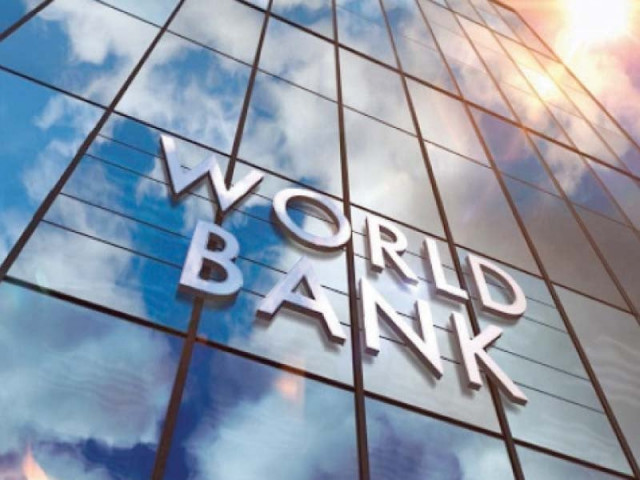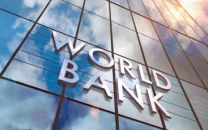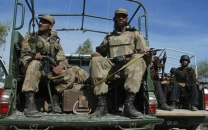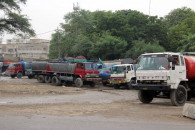Floods vs Economy: WB warns Pakistan’s FY26 growth at risk
Pakistan’s economy expands 3% in FY25, up from 2.6% in FY24, projects 3% growth in FY26

Pakistan’s economy is projected to grow by 3% in the fiscal year ending June 2026 as recent floods continue to weigh on growth prospects.
According to a report by the World Bank, the growth rate mirrors FY25, when the economy expanded by 3%, up from 2.6% in FY24, reflecting a rebound in industrial activity and services.
The World Bank’s warning on flood-related constraints also reinforces concerns over Pakistan’s deepening climate vulnerability. “Pakistan’s recent floods have imposed significant human costs and economic losses, dampening growth prospects, and adding pressure on macroeconomic stability,” said Bolormaa Amgaabazar, World Bank Country Director for Pakistan.
He further added, “Staying the course on reforms and accelerating job creation is critical to maintaining growth, along with strengthening social safety nets and infrastructure that protects the most vulnerable citizens."
Growth was driven mainly by industry and services, while agriculture underperformed due to adverse weather, pest infestations, and the impact of floods.
Read: World Bank slashes Pakistan's FY26 growth to 2.6%
The World Bank highlighted that fiscal tightening and appropriate monetary policies helped anchor inflation and maintain current account and primary fiscal surpluses despite a challenging global and domestic environment.
Floods constrain near-term growth, medium-term outlook improves
Immediate and lingering impacts of the floods are expected to keep FY26 growth around 3%. The report projects growth could accelerate to 3.4% in FY27, provided macroeconomic stability continues and key structural reforms are implemented, although tight fiscal policies and vulnerability to natural disasters will likely remain constraints.
Mukhtar Ul Hasan, lead author of the report, emphasised the urgent need for fiscal reforms, including broadening the tax base, strengthening tax administration, divesting state-owned enterprises, and rationalizing the public sector to support growth while managing flood recovery.
A special focus of the report highlighted that exports are essential for sustainable growth, noting Pakistan’s exports have fallen from 16% of GDP in the 1990s to around 10% in 2024, leaving the economy reliant on debt- and remittance-driven consumption.
Read More: Govt close to sealing IMF staff deal, $1.2b payout expected to ease financial pressure
“Tariff reforms are a historic step, but must be complemented by a market-determined exchange rate, stronger trade finance, improved logistics, and expanded access to export markets,” said Anna Twum, co-author of the report.
The World Bank recommended investment in IT services, digital infrastructure, climate-resilient agriculture, and energy reforms to enhance Pakistan’s export competitiveness and support long-term economic resilience.
World Bank unveils 10-Year partnership framework for Pakistan
World Bank's report outlined the 10-year World Bank Country Partnership Framework (CPF) FY26–FY35 for Pakistan, focusing on six key outcomes:
-
Reduced child stunting through access to clean water, sanitation, health, and nutrition services.
-
Reduced learning poverty via quality foundational education.
-
Increased resilience to floods and climate-related disasters, with improved food and nutrition security.
-
Cleaner and sustainable energy with better air quality.
-
Expanded fiscal space and more progressive public expenditure management.
-
Increased productive and inclusive private investment to improve trade balances and sustainable growth.
The CPF represents a shift from short-term adjustment programs toward selective, long-term investments in areas critical for sustained development, aligned with Pakistan’s National Economic Transformation Plan, Uraan Pakistan, and the Prime Minister’s Economic Transformation Agenda.
Also Read: World Bank approves $194m for education, water security in Balochistan
Pakistan has been a member of the World Bank since 1950, receiving over $48.3 billion in assistance. The current portfolio includes 54 projects worth $15.7 billion, while the International Finance Corporation (IFC) has invested roughly $13 billion in sectors such as renewable energy, infrastructure, financial inclusion, agribusiness, manufacturing, healthcare, and trade.
Pakistan’s near-term growth remains constrained by floods and structural challenges, but fiscal consolidation, export-oriented reforms, and long-term investment strategies under the World Bank’s CPF could support sustainable and inclusive economic recovery in the medium term.





















COMMENTS (3)
Comments are moderated and generally will be posted if they are on-topic and not abusive.
For more information, please see our Comments FAQ